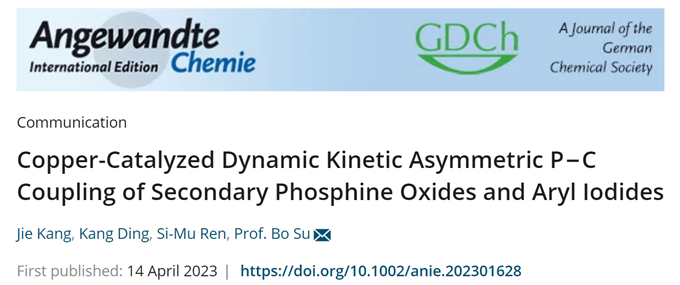With unique structural characteristics and physicochemical properties, chiral phosphine compounds are widely applied in drug creation, materials, chemistry, and other fields. For example, the frequently-used antiviral agents, such as Sofosbuvir and Remdesivir, are compounds containing chiral phosphine. These compounds, as chiral ligands or catalysts, are also in widespread use in asymmetric synthesis. Despite their significant role, their synthesis has been one of the challenges in chemistry. The current synthesis of chiral phosphorus compounds mainly relies on the resolution and desymmetrization of chiral prosthetic groups. However, these are relatively indirect processes requiring multi-step reactions and do not involve the formation of key carbon-phosphorus (C-P) bonds.
Transition metal-catalyzed asymmetric C-P bond coupling is one of the most direct ways to construct chiral phosphine, which is of great significance. In recent years, although the asymmetric coupling reactions of secondary phosphine oxide (R1R2P(O)-H) and halohydrocarbon catalyzed by transition metals (palladium, nickel, cobalt, and copper) have advanced, due to the difficulties in the racemization of secondary phosphine oxide or incompatibility with catalysts, these reactions mostly occur by kinetic resolution (with a yield of usually less than 50%), and the atom economy is not satisfactory. Therefore, new catalytic systems are urgent for the dynamic kinetic transformation of secondary phosphine oxide.

Recently, our team focusing on new chemical reaction development and new drug creation led by Professor Su Bo, started from the ligand design and reaction mechanism and finally achieved the copper-catalyzed asymmetric dynamic arylation of secondary phosphine oxide through long-term exploration and numerous failures. The reaction is appropriate for various secondary phosphine oxides and aryl iodides, and most resulting products have high yields and an enantiomeric excess (ee) (> 90%). Other than having high activity and selectivity, the new catalytic system can promote the rapid racemization of secondary phosphine oxide, which is the key to the success of the reaction. More significantly, the resulting tertiary phosphine oxide products can easily be transformed into the framework of other ligands, laying a foundation for further development of chiral ligands with novel structures.
The research findings titled "Copper-Catalyzed Dynamic Kinetic Asymmetric P−C Coupling of Secondary Phosphine Oxides and Aryl Iodides" are published in the internationally renowned journal Angewandte Chemie-International Edition (Angew. Chem. Int. Ed.). Nankai University (NKU) is the sole completion unit. Kang Jie, a doctoral student, and Ding Kang and Lin Simu, master students at the College of Pharmacy, completed the work. Professor Su Bo is the corresponding author. The research was supported by China's High-level Talent Introduction Program, NKU’s “100 Young Academic Leaders Training Program”, the startup funds from the College of Pharmacy, NKU, and the National Natural Science Foundation of China.
Paper link: https://onlinelibrary.wiley.com/doi/10.1002/anie.202301628